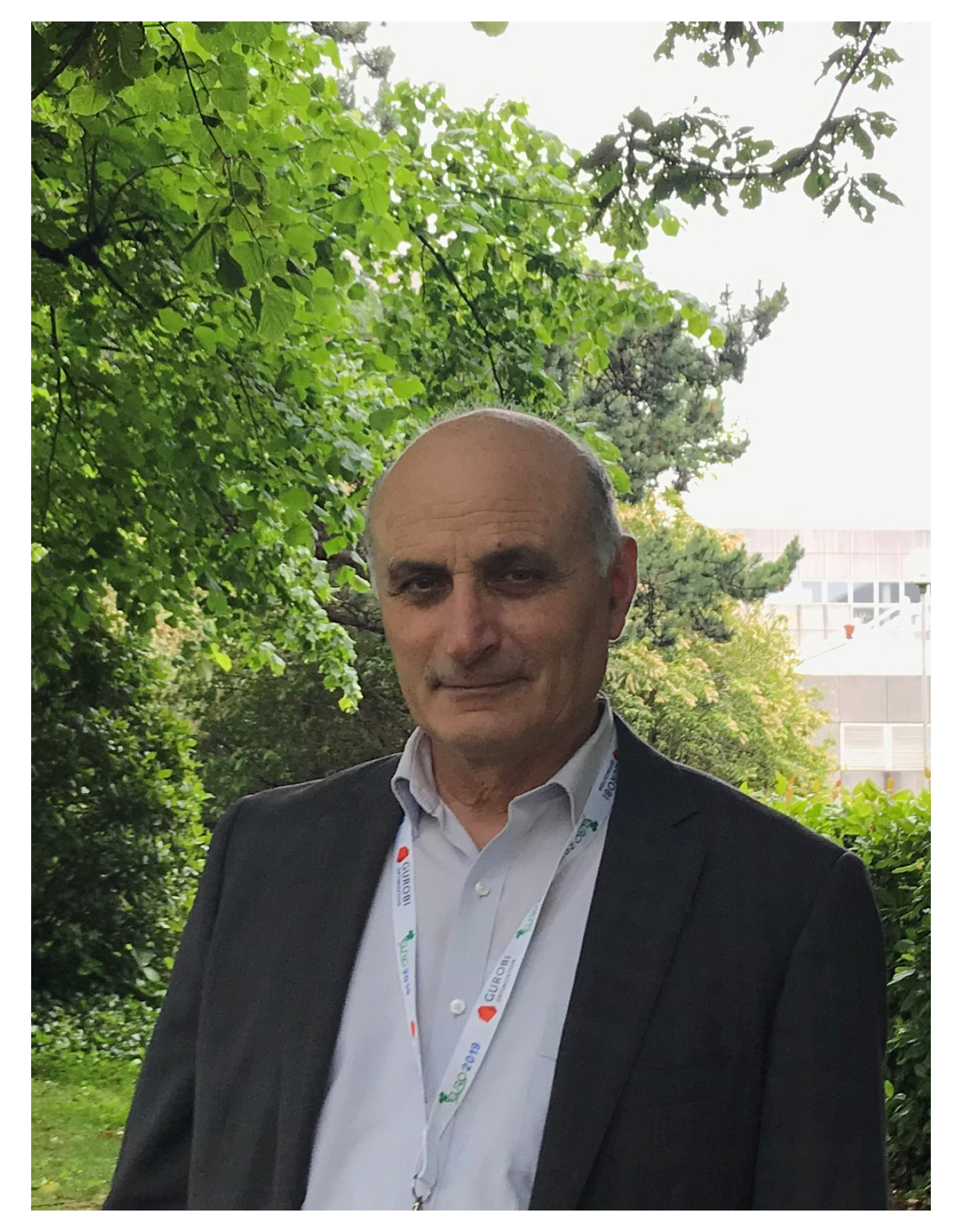Special Issue “Nonsmooth Optimization in Honor of the 60th Birthday of Adil M. Bagirov”: Foreword by Guest Editors
Abstract
1. Introduction
2. Nonsmooth Optimization
Funding
Conflicts of Interest
References
- Bagirov, A.M.; Karmitsa, N.; Mäkelä, M.M. Introduction to Nonsmooth Optimization: Theory, Practice and Software; Springer: Cham, Switzerland, 2014. [Google Scholar]
- Bagirov, A.M.; Karmitsa, N.; Taheri, S. Partitional Clustering via Nonsmooth Optimization: Clustering via Optimization; Springe: Cham, Switzerland, 2020. [Google Scholar]
- Bagirov, A.M.; Gaudioso, M.; Karmitsa, N.; Mäkelä, M.M.; Taheri, S. Numerical Nonsmooth Optimization: State of the Art Algorithms; Springer: Cham, Switzerland, 2020. [Google Scholar]
- Bagirov, A.M. Modified global k-means algorithm for sum-of-squares clustering problems. Pattern Recognit. 2008, 41, 3192–3199. [Google Scholar] [CrossRef]
- Bagirov, A.M.; Clausen, C.; Kohler, M. Estimation of a regression function by maxima of minima of linear functions. IEEE Trans. Inf. Theory 2009, 55, 833–845. [Google Scholar] [CrossRef][Green Version]
- Bagirov, A.M.; Karasozen, B.; Sezer, M. Discrete gradient method: Derivative-free method for nonsmooth optimization. J. Optim. Theory Appl. 2008, 137, 317–334. [Google Scholar] [CrossRef]
- Bagirov, A.M.; Mahmood, A.; Barton, A. Prediction of monthly rainfall in Victoria, Australia: Clusterwise linear regression approach. Atmos. Res. 2017, 188, 20–29. [Google Scholar] [CrossRef]
- Bagirov, A.M.; Rubinov, A.M.; Zhang, J. A multidimensional descent method for global optimization. Optimization 2009, 58, 611–625. [Google Scholar] [CrossRef]
- Bagirov, A.M.; Taheri, S.; Karmitsa, N.; Joki, K.; Mäkelä, M.M. Aggregate subgradient method for nonsmooth DC optimization. Optim. Lett. 2020, in press. [Google Scholar] [CrossRef]
- Bagirov, A.M.; Taheri, S.; Ugon, J. Nonsmooth DC programming approach to the minimum sum-of-squares clustering problems. Pattern Recognit. 2016, 53, 12–24. [Google Scholar] [CrossRef]
- Joki, K.; Bagirov, A.M.; Karmitsa, N.; Mäkelä, M.M.; Taheri, S. Double bundle method for finding Clarke stationary points in nonsmooth DC programming. SIAM J. Optim. 2018, 28, 1892–1919. [Google Scholar] [CrossRef]
- Karmitsa, N.; Bagirov, A.M.; Taheri, S. New diagonal bundle method for clustering problems in large data sets. Eur. J. Oper. Res. 2017, 263, 367–379. [Google Scholar] [CrossRef]
- Colonetti, B.; Finardi, E.C.; de Oliveira, W. A Mixed-Integer and Asynchronous Level Decomposition with Application to the Stochastic Hydrothermal Unit-Commitment Problem. Algorithms 2020, 13, 235. [Google Scholar] [CrossRef]
- Śmietański, M.J. On a Nonsmooth Gauss–Newton Algorithms for Solving Nonlinear Complementarity Problems. Algorithms 2020, 13, 190. [Google Scholar] [CrossRef]
- Griewank, A.; Walther, A. Polyhedral DC Decomposition and DCA Optimization of Piecewise Linear Functions. Algorithms 2020, 13, 166. [Google Scholar] [CrossRef]
- Juan, A.A.; Corlu, C.G.; Tordecilla, R.D.; de la Torre, R.; Ferrer, A. On the Use of Biased-Randomized Algorithms for Solving Non-Smooth Optimization Problems. Algorithms 2020, 13, 8. [Google Scholar] [CrossRef]
- Montonen, O.; Ranta, T.; Mäkelä, M.M. Planning the Schedule for the Disposal of the Spent Nuclear Fuel with Interactive Multiobjective Optimization. Algorithms 2019, 12, 252. [Google Scholar] [CrossRef]
- Astorino, A.; Fuduli, A.; Giallombardo, G.; Miglionico, G. SVM-Based Multiple Instance Classification via DC Optimization. Algorithms 2019, 12, 249. [Google Scholar] [CrossRef]

Publisher’s Note: MDPI stays neutral with regard to jurisdictional claims in published maps and institutional affiliations. |
© 2020 by the authors. Licensee MDPI, Basel, Switzerland. This article is an open access article distributed under the terms and conditions of the Creative Commons Attribution (CC BY) license (http://creativecommons.org/licenses/by/4.0/).
Share and Cite
Karmitsa, N.; Taheri, S. Special Issue “Nonsmooth Optimization in Honor of the 60th Birthday of Adil M. Bagirov”: Foreword by Guest Editors. Algorithms 2020, 13, 282. https://doi.org/10.3390/a13110282
Karmitsa N, Taheri S. Special Issue “Nonsmooth Optimization in Honor of the 60th Birthday of Adil M. Bagirov”: Foreword by Guest Editors. Algorithms. 2020; 13(11):282. https://doi.org/10.3390/a13110282
Chicago/Turabian StyleKarmitsa, Napsu, and Sona Taheri. 2020. "Special Issue “Nonsmooth Optimization in Honor of the 60th Birthday of Adil M. Bagirov”: Foreword by Guest Editors" Algorithms 13, no. 11: 282. https://doi.org/10.3390/a13110282
APA StyleKarmitsa, N., & Taheri, S. (2020). Special Issue “Nonsmooth Optimization in Honor of the 60th Birthday of Adil M. Bagirov”: Foreword by Guest Editors. Algorithms, 13(11), 282. https://doi.org/10.3390/a13110282




